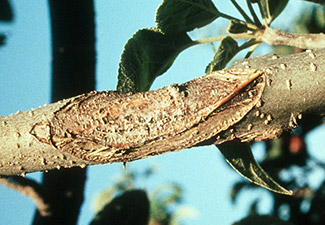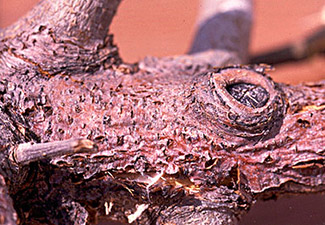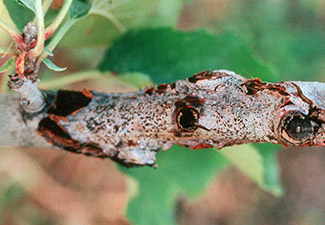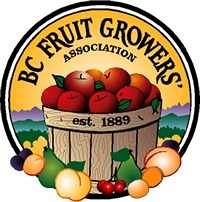Anthracnose & Perennial Cankers of Apple
General Description
Both anthracnose and perennial canker can affect the limbs and trunks of apple, and to a lesser extent, pear trees. The cankers reduce the vigour of trees or limbs with resultant reduction of fruit quality, and can girdle and kill young trees. They are also a source of spores that can infect fruit and cause bull's-eye rot in storage.
Anthracnose is caused by the following fungi: Neofabraea malicorticis (Cryptosporiopsis curvispora); Neofabraea alba (Phlyctema vagabunda).
Perennial canker is caused by Neofabraea perennans (Cryptosporiopsis perennans).
Symptoms
Anthracnose: Cankers appear as small circular spots that are reddish when moist. As they enlarge they become elongated and sunken, and orange to brown in colour, with cracks around the edges. Cream coloured fruiting bodies (acervuli) break through the surface of the cankers. As damaged bark disintegrates, the cankers develop a "fiddle string" appearance.
Perennial canker: Cankers appear as sunken, elliptical, discoloured areas in the bark, and appear very similar to young anthracnose cankers. However, as the cankers age, callus tissue is formed, which appears as a series of concentric rings after several years. Black coloured fruiting bodies (acervuli) appear in the cankers.
 |
 |
| Figure 1. Anthracnose canker on apple. (Jim Rahe) | Figure 2. Anthracnose canker damage. (BCMA) |
 |
|
| Figure 3. Perennial canker on apple. (AAFC) |
Life Cycle
Spores from new cankers are spread by rain or overhead irrigation during the late summer and fall months, and initiate new infections that appear as cankers during April through July of the following year. Cankers that are allowed to overwinter produce airborne spores during the following spring and summer that can initiate new infections at a distance from the source. The airborne spores function mainly to initiate new infections, while the water-borne spores serve to intensify the disease in trees that are already infected.
Anthracnose canker is favoured by wet conditions, and is common in coastal orchards. N. malicorticis is an aggressive pathogen, and can infect healthy bark, while N. alba usually requires wounds to infect.
Perennial canker is less aggressive than anthracnose canker, and requires wounds such as frost injury, pruning wounds or woolly aphid injury to infect. It is common in the Interior fruit growing areas.
Management
Cultural Control
Prune out and remove all cankers during winter pruning. Prune out any new cankers that develop on limbs and trunks as soon as they are discovered, and remove them from the orchard. Developing cankers often girdle 1-year-old wood; remove any shoots that wilt or die suddenly during April through July as soon as they appear.
Nursery trees should be examined carefully for symptoms of the disease at planting and again the following spring. Trees with cankers should be returned to the nursery for replacement or discarded.
The cultivars Elstar, Empire, Gala and Sinta are very susceptible to anthracnose canker.
Chemical Control
There are no fungicides registered for control of anthracnose and perennial canker in Canada. Fungicides applied for other diseases such as apple scab may help to reduce the numbers of new infections. Limited local data indicate that using Inspire Super for scab or mildew, or Senator for mildew, may also provide some preventative suppression of fungal cankers.
Cankers produce spores that can infect fruit late in the season resulting in post-harvest rots in storage. Captan is registered for control of bull's-eye rot and can be applied up to 7 days before harvest.
Updated December 2016
